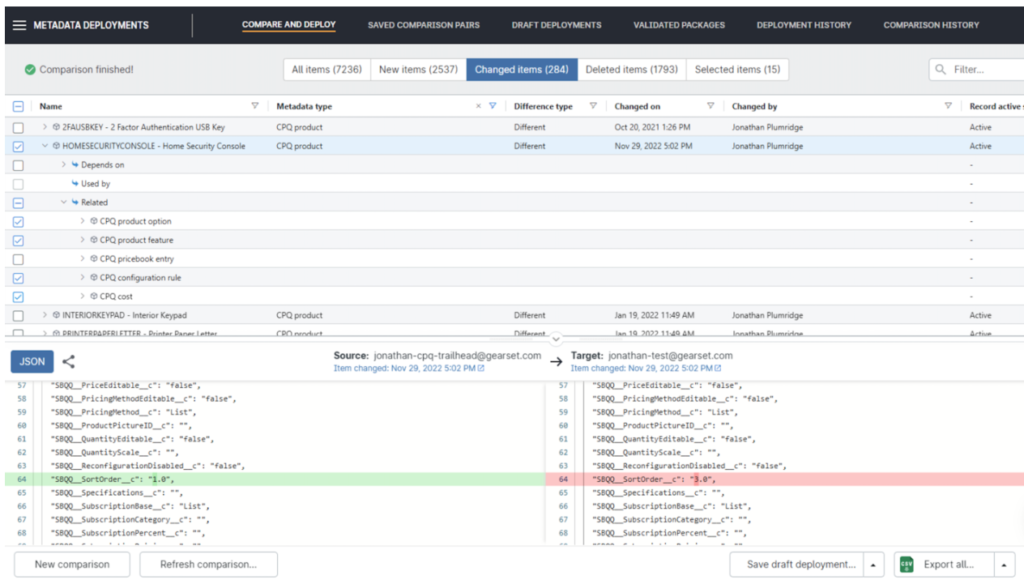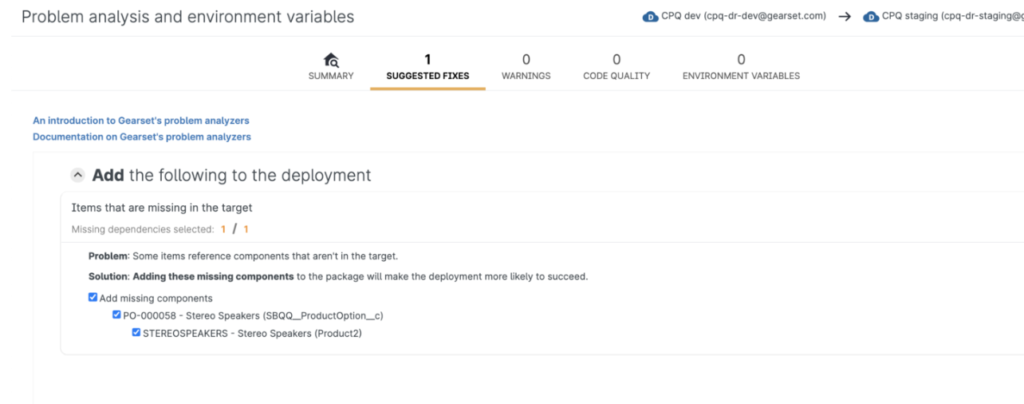Deploying Salesforce CPQ (Configure, Price, Quote) is notoriously difficult. Some tools offer out-of-the-box CPQ templates to help mitigate the problem. As a result of Gearset’s latest release, CPQ deployments have been transformed.

What Makes CPQ Unique?
Configurations for CPQ, Billing, and Advanced Approvals differ from those for other Salesforce customizations.This isn’t just another set of metadata types, they’re not even strictly metadata. In 2015, Salesforce acquired SteelBrick, which created CPQ as a managed package.
Salesforce’s Revenue Cloud now offers these solutions for creating highly configurable quotes, bills, and approvals.
What Makes CPQ Deployments So Complex?
It has always been difficult to understand and migrate CPQ configurations due to their complex model of dependent components. Also, CPQ configurations often depend on metadata. It results in a web of interrelated CPQs and metadata that need to be managed delicately across two deployments.
The process of deploying CPQ on Salesforce is much more difficult than the process of deploying metadata. When you deploy CPQ configuration, Salesforce creates new record IDs in the target org. CPQ records typically contain external IDs so that teams can track everything across multiple organizations.
CPQ deployments are complex and unique, posing challenges for Salesforce teams:
-
- CPQ deployments are incredibly time-consuming and error-prone, absorbing time and effort that could be better spent on development.
-
- Collaboration is difficult and single points of failure result for a team when they require CPQ specialists.
-
- The audit trail for development and releases is split or incomplete when CPQ deployments are handled separately from metadata deployments.
-
- Because challenging deployments discourage frequent releases, end users have to wait longer between releases and cannot provide early feedback.
It is difficult to integrate CPQ into a broader DevOps process and coordinate different workstreams.
- Because challenging deployments discourage frequent releases, end users have to wait longer between releases and cannot provide early feedback.
Analyze And Deploy CPQ With Metadata
With Gearset, you can now compare CPQ configuration in the same side-by-side diff viewer used for metadata deployments. The user-friendly UI displays a comparison of your source and target orgs separated into new, changed, and deleted items. Easily spot your CPQ items by the ‘CPQ’ prefix in the metadata type column.

CPQ items show all related components, so be sure to include everything you need in your deployment package the first time.
As an added benefit, every deployment package put together by Gearset is subjected to pre-deployment checks to identify common deployment issues that lead to failure.

The pre-deployment summary page displays all metadata and CPQ configuration included in the deployment package and prompts you to give the deployment a name and notes for easy auditing.
When you hit Deploy Now, Gearset will start deploying your metadata. When this point is reached, Gearset will halt the deployment, roll back any changes, and not begin the CPQ deployment.
Your organization will be restored to its pre-deployment state, so you won’t have to unpick half-completed deployments. As soon as the metadata has been successfully deployed to your target environment and any tests have been run, Gearset will deploy your CPQ configuration. Following the deployment, you’ll receive a detailed breakdown of every item deployed, including a direct link to every item.
To receive the latest news and posts directly in your inbox, subscribe to Fidizzi




